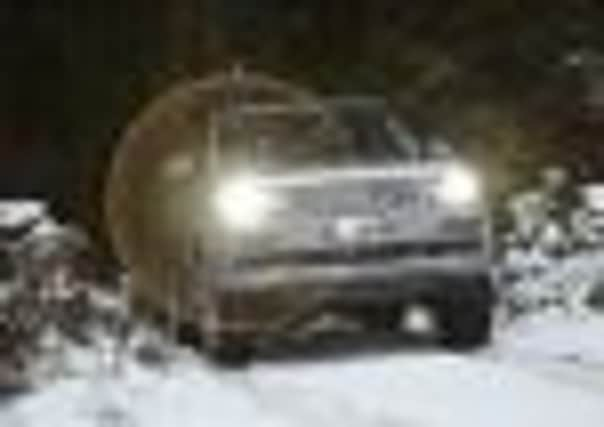Smaller diesel at home on the Range Rover 3.0 TDV6


But I let my guard down when it came to my morning ablutions. Instead of using bottled water, I brushed my teeth with tap water. I may have been staying in an upmarket hotel, but the water, I discovered later, came from the local supply. I’ll spare you the details but I was very ill for three days and even when I got back on my feet I had to plan my journeys very carefully.
So it was with mixed feelings that I heard that Morocco had been chosen for the international launch of the all-new Range Rover, the fourth generation of the iconic vehicle. On the one hand, the North African country was the last place in the world I’d want to return to but on the other hand, I might have been prepared to risk further intestinal issues for the chance to be among the first to drive the new machine. As it happens, I failed to make the cut to be among the select group who did get there and my Scotsman Motors colleague Tom Hunter spent a couple of days roving in the dunes… and from what I gather, paid a similar price to what I had a few years earlier.
Advertisement
Hide AdHowever, for once I reckon I won in the long run, as it were. As part of the introduction of the new car to the remaining UK motoring journalists, Land Rover brought their new big baby to Scotland and the timing couldn’t have been better. From their base at Gleneagles Hotel, we watched the first snowfall of winter before we headed up to the Land Rover Experience centre at Dunkeld. In this weather, other manufacturers may have been in despair, wondering how many of their cars would survive the test route in the deteriorating conditions. But we were about to head out in the pride of the Land Rover fleet which had been developed and tested over thousands of miles in more than 20 countries and the Arctic, so a Scottish winter should be a dawdle. Which, indeed, it was.


In convoy around the snow-covered Dunkeld course, a stream of more than a million pounds-worth of Range Rovers easily handled treacherously slippery tracks as though it was a gentle drive down to the shops. Sadly, I suspect negotiating the car park at Tesco will be the most demanding thing many of the new Range Rovers will ever do, in spite of being equipped with the very latest off-roading technology.
Its Terrain Response system automatically analyses the conditions and sets up the engine, gearbox, differential and chassis to provide maximum traction accordingly, and along with advanced hill descent control and an ability to wade through water to a depth of almost a metre, makes it the most go- anywhere Range Rover ever.
The company has improved its environmental credentials too. Much of the new car is aluminium. As a result, it is 420kg lighter than the previous model and only slightly heavier than a Mini. That means fuel economy is better than ever and CO2 is down by 22 per cent. Even the Bridge of Weir Leather for the interior is produced in a low-carbon manufacturing process. I drove the 3.0-litre V6 diesel version which will be the biggest seller and to my mind just as capable as the larger 4.4-litre V8 diesel or the pretty impractical 5.0-litre V8 petrol, which comes with a supercharger and in which you’d be lucky to get 20mpg around town.
Apart from its ability off-road, it was rock-solid on the muddy, wet and icy roads of Perthshire with less body roll than the outgoing model. It’s also quiet as a result of attention to detail by the engineers, even to the extent of acoustic lamination on the windscreen and sound- absorbing foam ducts on the ventilation system in place of hard plastic.
At this price, you’d expect everything and the test car had it but there was still more than £5,500 of extras including the huge panoramic sliding glass roof (£1,500). A great standard feature for the first time in the Range Rover are the powered upper and lower rear doors which can be operated independently. The new car is a corker and a fabulous addition to a much improved range, especially the now dependable Discovery and successful latest arrival, the Evoque. Most will be exported worldwide.
Advertisement
Hide AdMany observers were concerned when the company was taken over by Indian conglomerate Tata. On the basis of the fourth-generation Range Rover, it’s the best thing that’s ever happened to this great British institution.
VITAL STATS
CAR Range Rover 3.0 TDV6 Vogue SE
PRICE £77,895 (£83,405 as tested)
PERFORMANCE Max speed 130 mph; 0-60 mph 7.4 secs
MPG 37.7 mpg combined
CO2 EMISSIONS 196g/km